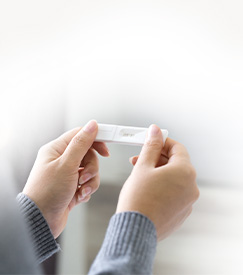 Bringing a new child into your family is an amazing experience. Sadly, though, some families that are interested in adopting a child or are looking into adoption may become discouraged due to some common adoption myths. Here are some common adoption myths debunked to help you in your adoption process.
Bringing a new child into your family is an amazing experience. Sadly, though, some families that are interested in adopting a child or are looking into adoption may become discouraged due to some common adoption myths. Here are some common adoption myths debunked to help you in your adoption process.
Birthmothers are always teenagers.
This is one of the most common adoption myths, despite being entirely untrue. Adoption can be a difficult decision for a woman of any age. Choosing to place a child for adoption is often a decision based on financial or emotional reasons, or even just because a woman doesn’t desire children; it has little to do with age. Many women who choose adoption for their baby are in their twenties and thirties.
Adopted children are troubled and/or disabled.
There have been many studies showing that this adoption myth is false. There is no difference between children raised by biological or adoptive parents in self-esteem, psychological well-being, and connection they feel to their family. Of course, health problems and disabilities are always a possibility, but adopted children are not more likely to be disabled than those raised by their adopted parents.
Only people who can’t have children adopt.
There are many different reasons a person or couple might decide to adopt. There are many families who raise biological and adopted children together, or those who can have children but decide to adopt a child who needs a home and family. There are many personal reasons to adopt a child, and while infertility may be a factor for some, it is not the only reason.
Adopting is expensive.
While adopting can be expensive, it’s not impossible for most families to strive for. There are many grants and reimbursements that can help any family who is looking to adopt and expand their families, and many adoptive families also choose to fundraise. There are so many options out there to help you with the financial process of adoption; don’t let financial concerns hold you back.
Birth parents can take back your child.
After your adoption has gone through and been finalized by the courts, the child is yours. Neither the birth parents or relatives of the birth parents can come back and take the child from you
There are no newborns available in America.
You might have heard that there are no babies to adopt in America. This simply isn’t true; out of domestic adoptions in America, one of the most common is the adoption of newborns. 18,000 of the 70,000 adoptions in the US are American infants.
It can take years to adopt.
When adopting domestically, the average waiting time is only one year. Adopting internationally can take up to two years because of the more difficult processes involved. There are occasionally exceptions that take longer, but the idea of parents waiting years and years for a child is a myth.
Open adoptions mean co-parenting with the birthmother.
Simply put, this isn’t how an open adoption works. An open adoption simply means there is some level of communication between the birthmother and adoptive parents after the adoption is complete, and can help the adoptee understand their adoption and the choice that their birth parents made.






